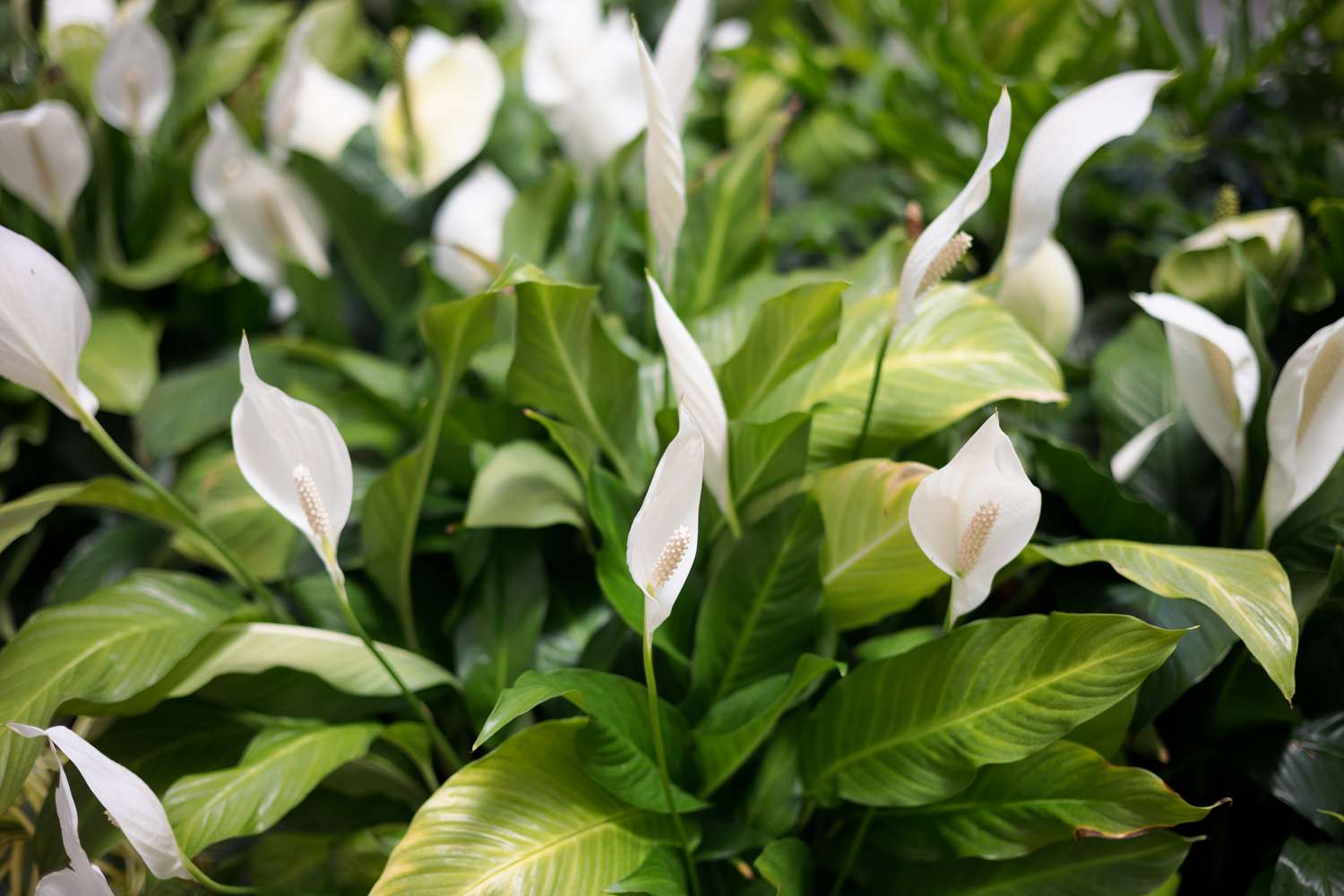If you’re on the hunt for a house plant that exudes tranquility and adds a touch of elegance to your space, look no further than this beautiful plant. Any guesses? It’s the peace lily. With its lush green foliage and stunning white flowers, the peace lily (Spathiphyllum) has become a top favorite among indoor gardening enthusiasts.
Not only does the peace lily bring a touch of serenity and beauty to any living space, but it also boasts a range of air-purifying qualities that make it a popular choice for improving indoor air quality. The peace lily’s versatility and ability to thrive in various conditions further add to its appeal, making it a favorite among both seasoned and novice gardeners. Here are ten gardening tips to help you select, care for, and maintain your peace lilies, ensuring they stay healthy and thriving in your home sweet home.
1. Choosing the right peace lily:

Look for a plant with deep green leaves and no signs of yellowing or wilting. Select a size that suits your space, considering that peace lilies can range from compact varieties to larger floor plants.
2. Light requirements:

Place your peace lily in bright, indirect light. Avoid exposing it to direct sunlight, as this can scorch its leaves. However, insufficient light can result in reduced blooming, so finding the right balance is crucial.
3. Watering:
Keep the soil of your peace lily slightly moist, but not overly saturated. It is best to water the plant when the top inch of the soil feels dry to the touch. Be mindful not to let it sit in standing water, as this can lead to root rot.
4. Humidity:
Peace lilies thrive in humid environments. Increase humidity levels by misting the leaves regularly or placing the plant on a tray filled with water and pebbles. This helps to create a microclimate around the plant.
5. Temperature:
Peace lilies prefer temperatures between 65°F and 85°F (18°C to 29°C). Keep them away from drafts or extreme temperature fluctuations.
6. Fertilization:
Feed your peace lily with a balanced, water-soluble fertilizer once a month during the growing season. Dilute the fertilizer according to the package instructions to avoid over-fertilization.
7. Pruning:
Remove yellow or brown leaves to maintain the plant’s appearance and promote healthy growth. Use clean and sharp pruning shears to prevent the spread of diseases.
8. Re-potting:
Peace lilies generally prefer to be slightly root-bound, so repotting is only necessary when the plant has outgrown its current container. Use a well-draining potting mix and choose a pot that is one size larger than the current one.
9. Brown leaves:
If you notice browning on the tips or edges of the leaves, it may indicate underwatering or a buildup of mineral salts. Adjust your watering routine and consider using distilled water or allowing tap water to sit for 24 hours before using.
10. Pest control:
Although peace lilies are relatively resistant to pests, they can occasionally attract spider mites or mealybugs. Regularly inspect the leaves and stems, and treat any infestations with an appropriate insecticidal soap or neem oil.
